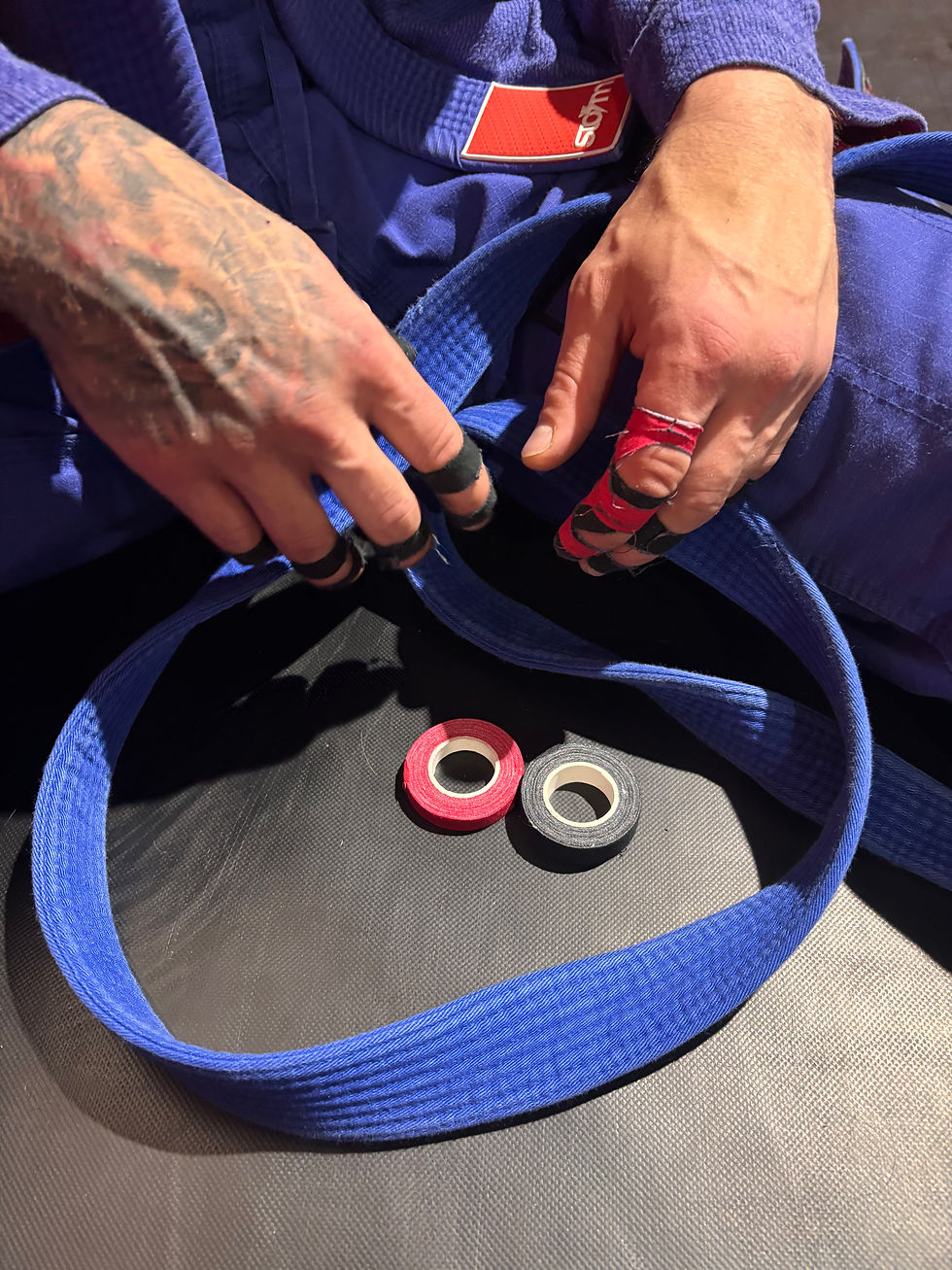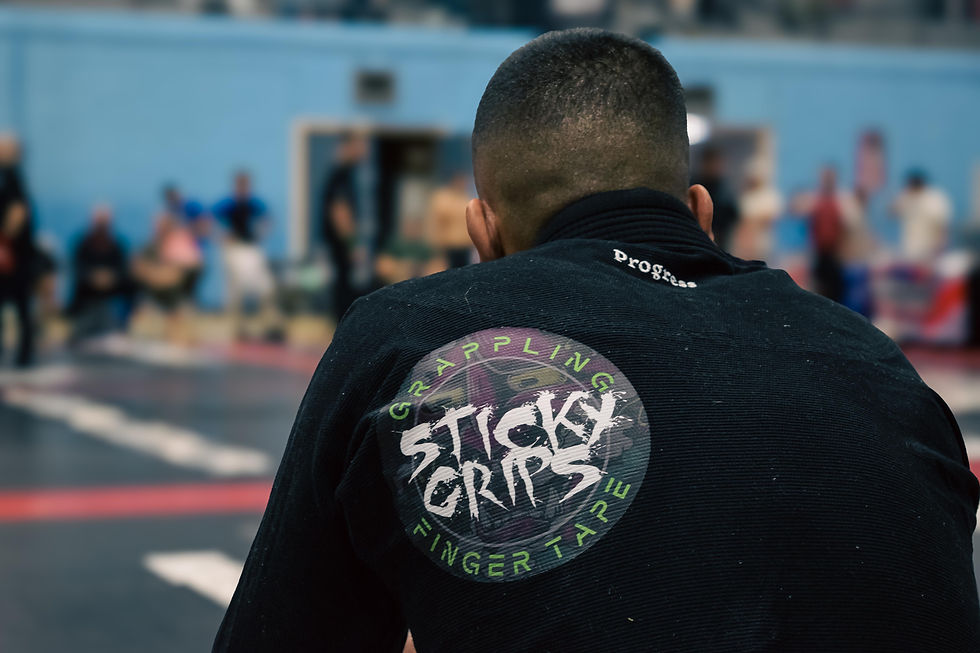How to Protect Your Fingers During Intense Training Sessions
- Angel Z.
- May 29
- 3 min read
Intense training sessions can put a lot of strain on your fingers, whether you are practicing Brazilian Jiu-Jitsu, climbing, or engaging in other physically demanding sports. Protecting your fingers is essential not only to avoid pain but also to ensure that you can continue training consistently. In this blog post, we will explore various strategies to safeguard your fingers during those rigorous workouts, including the use of protective gear, proper techniques, and preventive practices.
Importance of Finger Protection
Finger injuries can impede your training and performance. According to a study by the American Academy of Orthopaedic Surgeons, injuries to fingers and hands are among the most common in sports and physical activities. These injuries can range from minor strains to serious fractures. Understanding the importance of finger protection can help you take proactive steps to minimize risks.
Start with basic techniques, such as warming up properly and utilizing the right grips.
Evaluate your training environment. Make sure that mats or surfaces are appropriate and that you are using the right gear.
By emphasizing the significance of finger protection, you are more likely to remain committed to your training without interruptions from injuries.

Essential Gear
Having the right gear is crucial for finger protection. Certain items can provide the needed support and cushioning during intense activities.
Finger Sleeves: These are soft and stretchy covers that fit snugly over your fingers. They help keep fingers warm and reduce the risk of injury while training.
Gloves: Some sports require gloves that not only protect fingers but also provide added grip. Choose gloves specifically designed for your sport to ensure maximum efficiency.
Tape: Using specialized tape can be a game-changer. Taping your fingers can provide stability and support, preventing hyperextension and reducing strain. BJJ tape can effectively keep your fingers safe during Brazilian Jiu-Jitsu.
By including this protective gear in your training routine, you can significantly reduce the risk of injury and fatigue.

Proper Techniques
Adopting proper techniques during your training can have a wonderful impact on finger protection. Here are some strategies:
Warm-Up: Before diving into intense training, take the time to warm up your hands and fingers. Simple stretches can improve flexibility and make them more resilient to stress.
Use Correct Grip: Different sports and activities will require varied grips. Understand the grip that is best for your activity and practice it. This can prevent excessive strain on your fingers.
Mindful Movements: Pay attention to how you move your fingers during training. Try to avoid jerking movements that may lead to injuries.
Practicing these techniques consistently can help make finger injuries a rarity in your training sessions.

Quick Recovery Strategies
Even with the best precautions, finger injuries can still occur. Knowing how to respond quickly can make a significant difference in recovery time. Here are some immediate actions you can take:
Ice the Area: If you feel pain after training, applying ice can help reduce swelling and numb the pain.
Reduce Activity: Avoid using the injured finger as much as possible. Rest is essential for healing.
Seek Professional Help: If you have severe pain or suspect a fracture, consult a medical professional to assess the injury accurately.
Being prepared with recovery strategies bolsters your ability to return to training sooner and healthier.
Long-Term Prevention
Building a long-term prevention strategy requires consistency and awareness. Here are some recommendations to keep your fingers safe in the long run:
Strength Training: Strengthening the muscles in your hands and fingers can make them more resistant to injuries. Incorporate hand exercises and use stress balls to increase strength.
Hydration: Proper hydration supports overall muscle function and helps prevent fatigue-related injuries.
Regular Check-Ups: Regular visits to a physical therapist or sports medicine professional can help identify potential weaknesses and provide specific exercises to bolster your finger health.
By embedding these long-term preventative measures into your training routine, you can significantly reduce the likelihood of finger injuries.
Final Thoughts on Finger Protection
Protecting your fingers during intense training is integral to maintaining long-term performance in any sport. Utilizing essential gear, practicing proper techniques, and engaging in quick recovery strategies are all essential steps to avoid injuries.
Always remember that your fingers are vital to your success in many sports, and taking proactive steps can ensure that they continue to serve you well. By adopting these practices, you will not only enhance your training experience but also prolong your ability to engage in the activities you love.
Whether you're on the mat, climbing the wall, or performing complex movements in various sports, prioritizing finger protection is key. With a little effort, you'll be well on your way to safe and enjoyable training sessions.








Comentários